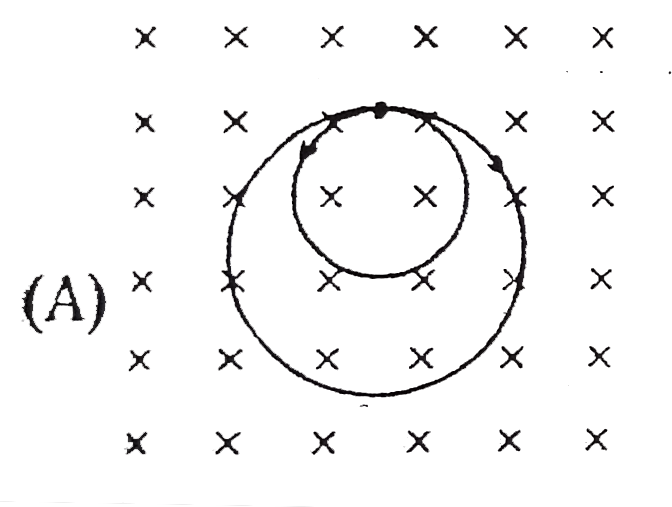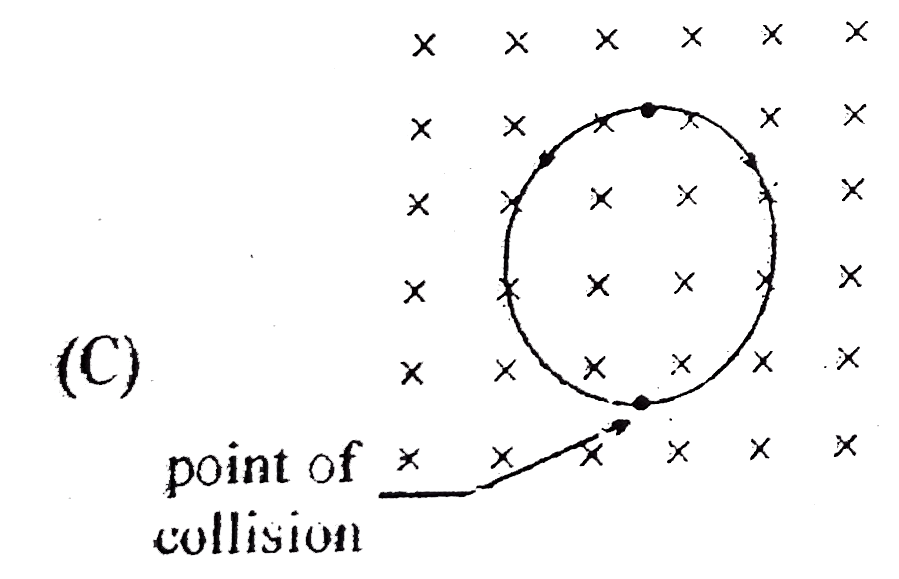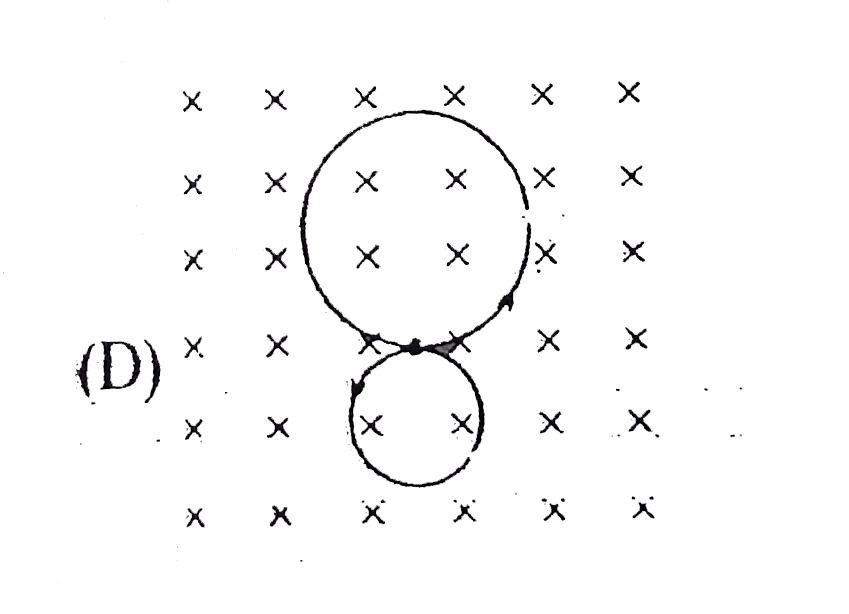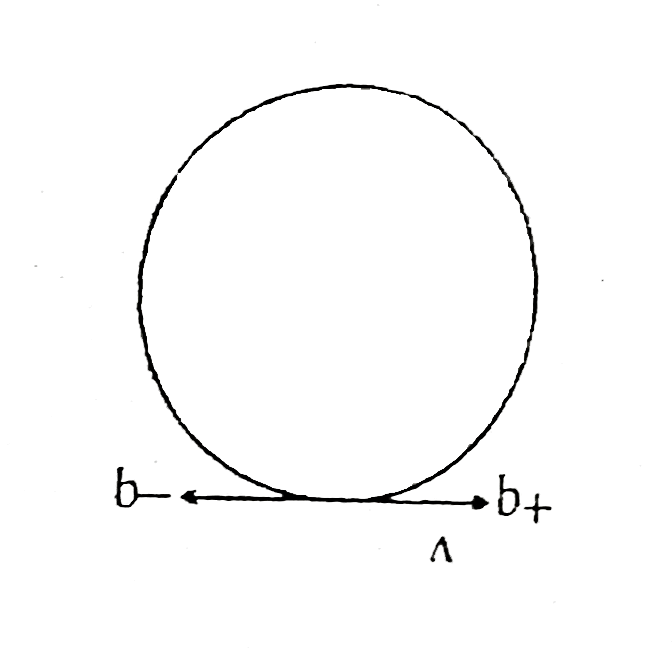A neutral particle at rest in a magnetic field decays into two charged particles of different mass. The energy released goes into their kinetic energy. Then what can be the path of the particles. Neglect any interaction between the two charges.




The correct Answer is:B
R=mvqB
q1=−q2
m1v1=m2v2
⇒R1=R2
but m1≠m2⇒ω1=qBm1≠qBm2
⇒ω is not equal So collision does not occurat diametrically opposite point.

Topper's Solved these Questions
- MASTER PRACTICE PROBLEMBook:BANSALChapter:MASTER PRACTICE PROBLEMExercise:Comphrehension
Explore 134 Videos
- MASTER PRACTICE PROBLEMBook:BANSALChapter:MASTER PRACTICE PROBLEMExercise:Reasoning
Explore 75 Videos
- FLUID MECHANICSBook:BANSALChapter:FLUID MECHANICSExercise:PYQS AIEEE
Explore 10 Videos
- SEMICONDUCTORSBook:BANSALChapter:SEMICONDUCTORSExercise:CBSE Question
Explore 32 Videos
Similar Questions
A neutral particle is at rest in a uniform magnetic field B. At time t=0 it decays into two charged particles, each of mass m.
(a) If the charge of one of the particles is +q, what is the charge of the other?
(b) The two particles move off in separate paths, both of them lie in the plane perpendicular to B. At a later time, the particles collide. Express the time from decay until collision in terms of m,B and q.
View SolutionWhen a charged particle moves in a magnetic field, does its kinetic energy always remain constant? Explain.
View Solution
Knowledge Check
A neutral particle at rest at A decays into two charged particles of different mass. Which can be ignore any gravitational and electrostatic force?
A B
B C
C D
D
A charged particle entering magnetic field obliquely will describe a path
AcircularBhelicalCparabolicDspiralA charged particle is moving in a uniform magnetic field and losses 4% of its KE. The radius of curvature of its path change by
A2%B4%C10%D12%
A neutral particle is at rest in a uniform magnetic field →B.At t=0,particle decays into two particles each of mass m and one of them having charge q Both of these move off in separate paths lying in plane perpendicular to →B.A later time,the particles collide.Find this time of collision neglecting the interaction force.
View SolutionA charged particle moves in a uniform magnetic field. The velocity of the particle at some instant makes an acute angle with the magnetic field. The path of the particle will be
View SolutionA charged particle moves in a uniform magnetic field. The velocity of the particle at some instant makes an acute angle with the magnetic field. The path of the particle will be
View SolutionIf the ratio of time periods of circular motion of two charged particles in magnetic field in 1/2, then the ratio of their kinetic energies must be :
View SolutionA charged particle of mass m and charge q is released from rest in an electric field of constant magnitude E. The kinetic energy of the particle after time t is
View Solution

